‘….only one way to pass the next day….to get up into a greate oak in a pretty plain place, where we might see round us…(it) had been lop’t (pollarded) some 3 or 4 years before and being growne out again very bushy and thick, could not be seen through.’ Charles II, describing how he hid in an oak tree at Boscobel in 1651
It’s a long, long drive from the north east corner of England to the far south-west. Breaking up the many miles with rests and stopovers makes a big difference to the experience. Doing the research I thought Boscobel House, a short drive west off the A5 from its junction with the M6 near Wolverhampton, might be a good place to meet the first of those requirements on day one of our recent travel south.

On September 3rd 1651 Charles Stuart fled the bloody scene of his army’s disastrous defeat by Cromwell’s Ironsides at the battle of Worcester. The demoralised prince and a handful of associates, now with a huge price on their heads, found refuge at this isolated hunting lodge in the early stages of their escape. Built in the previous century, in the midst of managed woodlands, its name means ‘beautiful wood.’ The property of recusant local landowners, the Gifford family, Boscobel had form as a ‘safe house’, used previously to hide the banned itinerate catholic priests who ministered to them. Their loyal tenants, the Penderels, took in the royal fugitive at great personal risk to themselves. They sheltered, fed and re-clothed the party, who continued their way disguised as servants and labourers, to be aided and guided by other royalist sympathisers, eventually taking ship at Shoreham into exile at the French royal court.
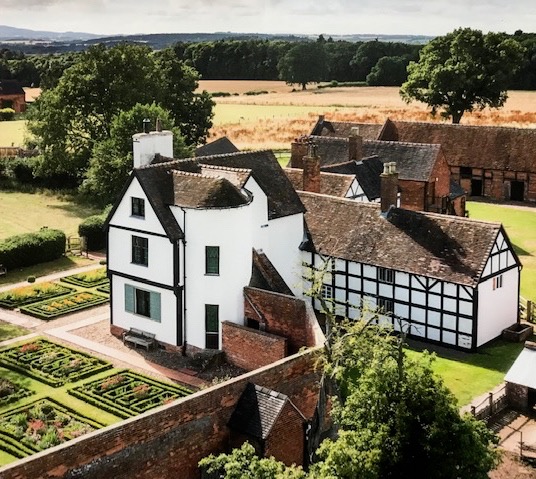
The dramatic story of Charles’ adventures was retold by the then King in 1680 to Samuel Pepys, augmenting earlier eyewitness accounts. The saga’s most famous episode had taken place at Boscobel when the fugitive monarch hid in an oak tree in the grounds while parliamentary troopers scoured the land below and house beyond. So popular was the tale that 29th May (Charles II’s 30th birthday and date of his restoration) became a national public holiday from 1660 to 1859. Public houses were named or renamed ‘The Royal Oak’ while at Boscobel itself sightseers came in their droves, taking away branches and twigs as souvenirs. An encasing brick wall was built to protect the tree from further diminution but that only seems to have hastened its demise by damaging the roots.
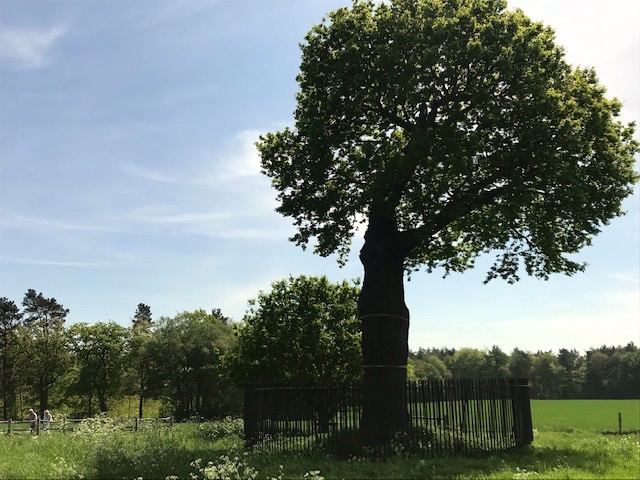
An acorn from the original took root in the early C18th alongside and that’s the tree you view today behind its railings. A lightening strike in 2000 destroyed one half of the canopy and straps now bound the trunk to stop it splitting. To mark the 350th anniversary of Charles’ stay, his namesake, the then Prince now King Charles III planted another successor oak nearby, which appears to be thriving. What impressed us most though, as we strolled through the rippling meadow, was that part of the ‘beautiful wood’, later cleared for agriculture, has been replanted in our century with native trees, including those propagated from the famous oak. It also reminded me of what happened closer to home last year at Sycamore Gap and how that singular tragic act of vandalism created a greater awareness and debate about the importance of native trees in the landscape that will – hopefully – result in new woodlands being planted in the right places as investment in natural capital to benefit us all, wherever we live.
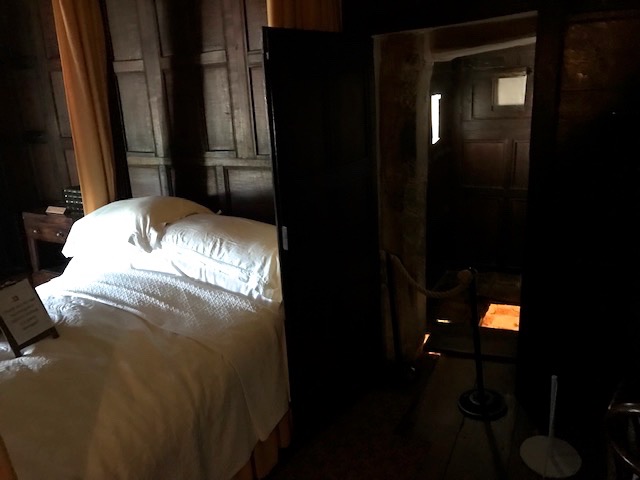
We were fascinated as much by Boscobel’s complex structure as a building, as by its part in history. Arriving upstairs to view the priest hole under floorboards where the prince spent an uncomfortable night and the attic room where he scanned the countryside for pursuers conveyed a strong sense of living history. It’s a small miracle Boscobel House and farm has survived relatively intact for the public to enjoy today and that is partly due to the Evans family, wealthy Midlands industrialists, who bought the place in 1812 and in the romantic spirit of the age set about restoring the place to what they perceived it to be in the 17th century.
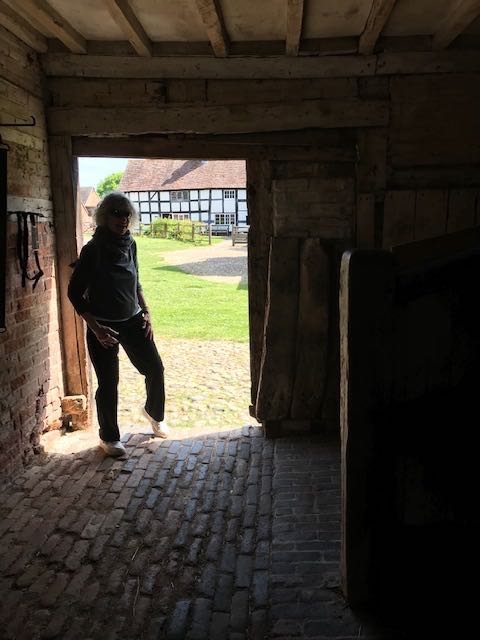
The Victorian farmyard we really took to. A prosperous working farm up until 1967, its planned set of interlinked stables and barns invite the visitor to explore a fabric of worked surfaces softly lit by diffused sunlight the quiet midweek day we visited. The oldest part of the site, the late Tudor north range (below), remodelled as a dairy in Victorian times, boasts an impressive hall roof structure.
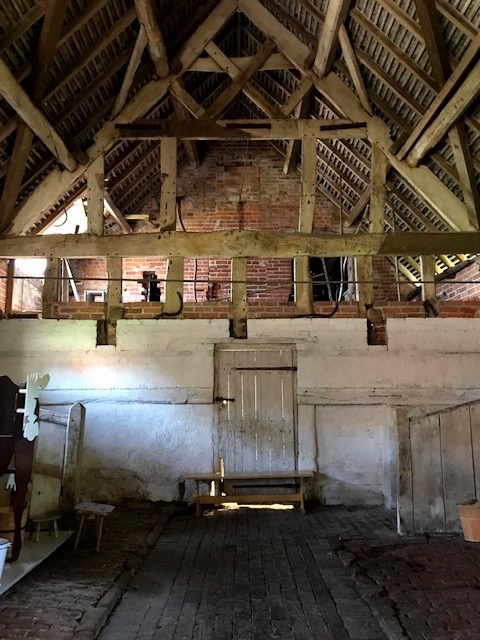
Now in the care of English Heritage, Boscobel had a major upgrade between 2019 – 20. With a reception area and café in converted outbuildings together with regional heritage breeds – Tamworth pigs, Shropshire and Ryeland sheep, Sebright and Dorking chickens – all add to the place’s agrarian attractiveness.
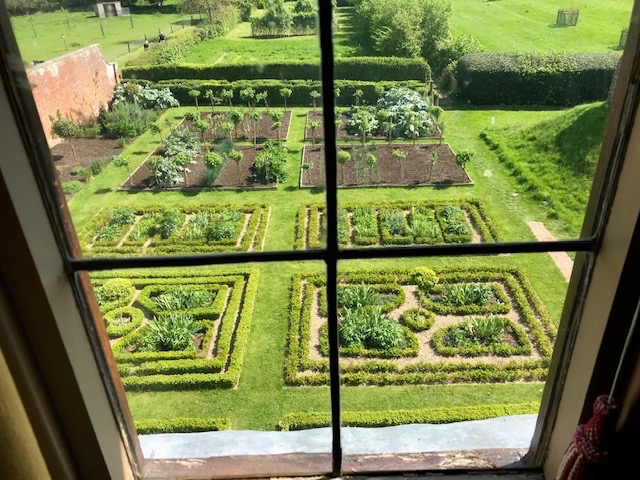
The famous historic episode set against the vernacular architecture of venerable timber frame house, farmyard brick buildings and restored gardens make for an enjoyable immersive experience. A restful welcome break on our own modest more comfortable royal progress across the country.
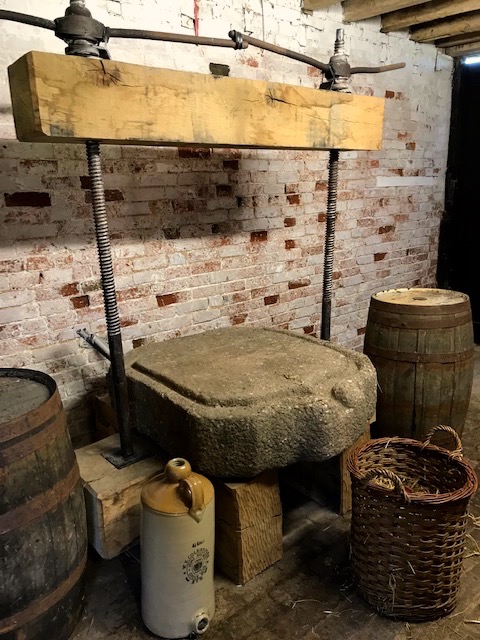
Plan your own visit by visiting: https://www.english-heritage.org.uk/visit/places/boscobel-house-and-the-royal-oak/